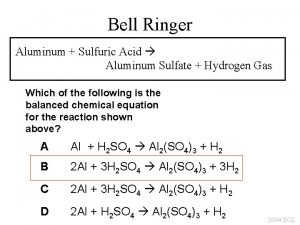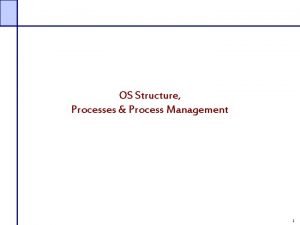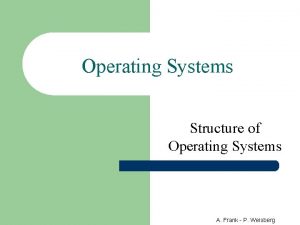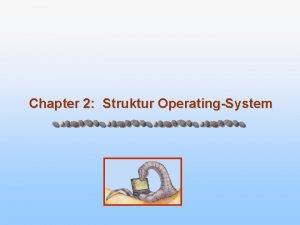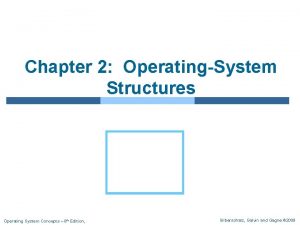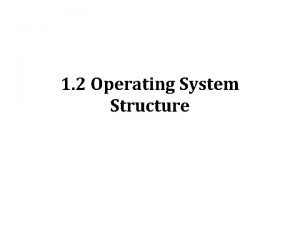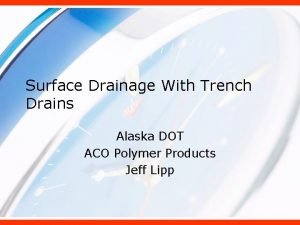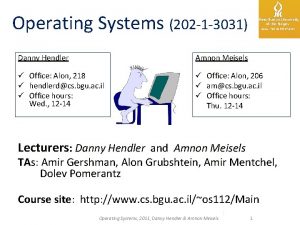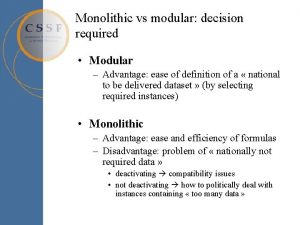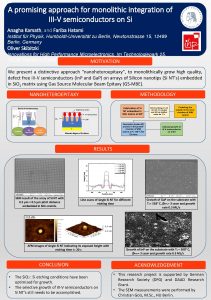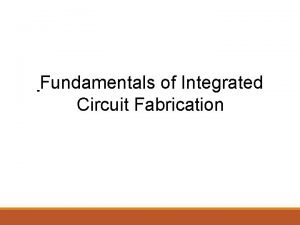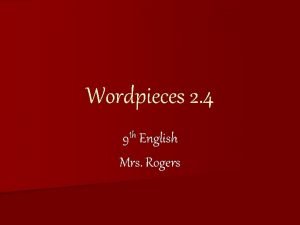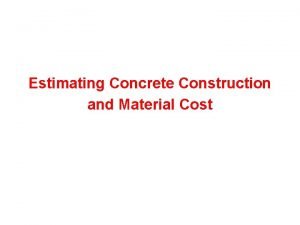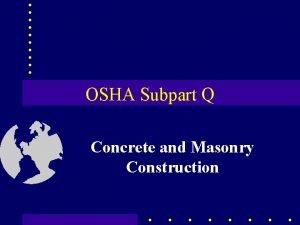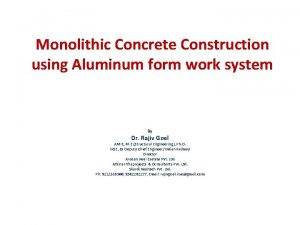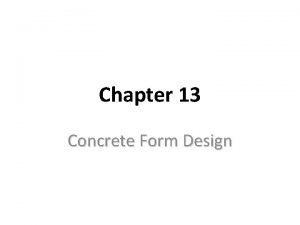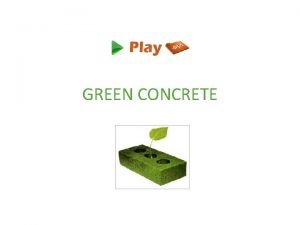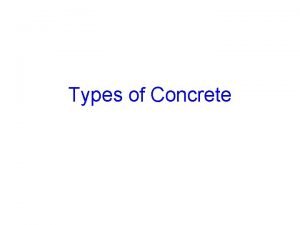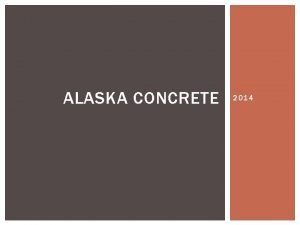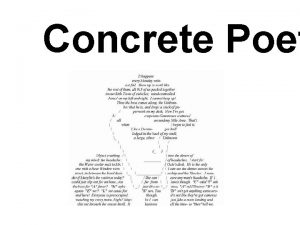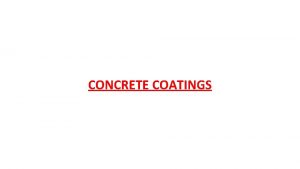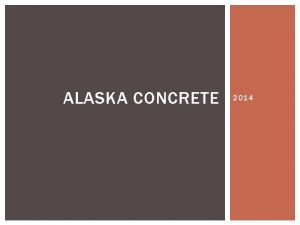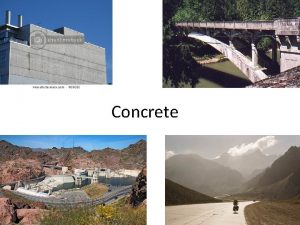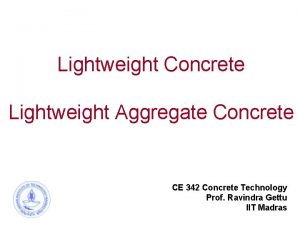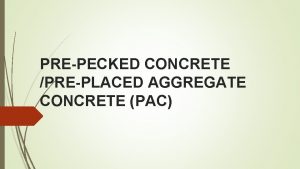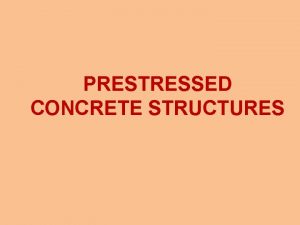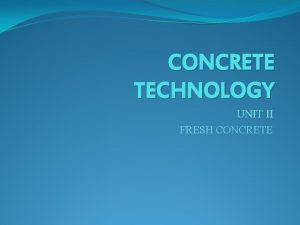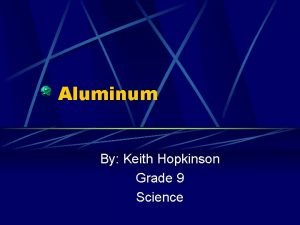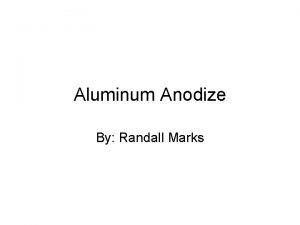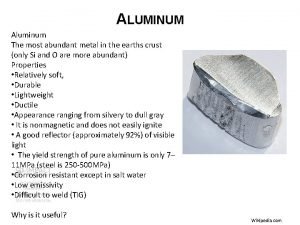Monolithic Concrete Construction using Aluminum form work system




















- Slides: 20

Monolithic Concrete Construction using Aluminum form work system By Dr. Rajiv Goel AMIE, M. E. (Structural Engineering), Ph. D. IRSE, Ex Deputy Chief Engineer/Indian Railway Director Arocon Real Esatate Pvt. Ltd. Atkins Infraprojects & Consultants Pvt. Ltd. Skardi Realtech Pvt. Ltd. Ph: 9212318500, 9582282277, Email: rajivgoel. irse@gmail. com


History The Aluminum Formwork System was developed by W. J. Malone, a Canadian Engineer in the late 1970 s as a system for constructing low–cost housing unit in developing countries. The units were to be of cast-in-situ concrete, with load bearing walls using a formwork of aluminum panels. To be erected by the hundreds, of a repetitive design, the system ensured a fast and economical method of construction. The in-situ construction of all walls and partitions reduces the requirement for follow-on wet trades. The concrete surface finish produced with the aluminium forms allows achievement of a high quality wall finish without the need for internal or external plastering.

Aluminium Formwork System is a construction system forming cast in place concrete structure of a building. It is also a system for scheduling and controlling the work of other construction trades such as steel reinforcement, concrete placement and mechanical and electrical conduits. The System is fast, simple, adaptable and very cost effective. It is unique because it forms all of the concrete in a building including walls, floor slabs, columns, beams, stairs, window hoods, balconies and various decorative features in exact accordance with the architects' design. The dimensional accuracy of the concreted work also results in consistent fittings of doors and windows. The smooth–off form finish of the concrete eliminates the need for costly plastering. Aluminium Formwork System provides Aluminium Formwork for RCC load bearing or RCC framed multi-storied buildings and enables the walls and slabs to be poured in the same operation. These increases efficiency and also produces an extraordinarily strong structure with excellent concrete finish. Due to the fine tolerance achieved in the machined metal formwork components, consistent concrete shapes and finishes are obtained floor after floor. This allows plumbing and electrical fittings to be prefabricated with the certain knowledge that there will be an exact fit when assembled. Unlike other construction systems, Formwork Systems of aluminium forms can be erected by unskilled labour and without the need for hoisting cranes. The largest panel weighs not more than 25 Kg which means it can be handled by a single worker.

TECHNOLOGY • Aluminium Formwork System is highly suited to load bearing wall construction whereas traditional formwork consisting of plywood and timber is not suitable to the high pressures of fresh concrete on the wall. • COST: Use of this formwork in load bearing design gives an average of 15 per cent cost saving in the structure of the building and increased usable floor space of 8 per cent over RCC design. • TIME: For 100 per cent work, construction through slab beam wall construction takes X time and through Aluminium Formwork technology the time required is 1/6 th of the X time. • ENVIRONMENT FRIENDLY: The technology is environment friendly as there is no use of timber. The formwork gives the box or cellular design resulting in the walls giving support to the super structure in two directions. As a result, the structures are more resistant to earthquakes than the traditional RCC column and beam designs. • LIFTING: As the Aluminium Formwork is lightweight, no tower cranes are required for the same unlike in tunnel framework. • LABOURS: Due to simplicity of the assembly, only unskilled labours are required with minimal supervision. • REPETITIONS: The Aluminium Formwork System is removable and can be reused hundreds of times with little maintenance. • SCRAP VALUE: Moreover, the requirement of steel is also reduced in this technology as aluminium has a higher scrap value.

SIMPLE ASSEMBLY SYSTEMS • The simplicity of Aluminium Formwork and the repetitive nature of the assembly process make it possible to accurately program construction sequences and thus cycle times well in advance. • In addition, this enables the unskilled labor to work with the formwork, therefore reducing the burden on skilled labor when this is in short supply. • On leaving the factory, all panels are clearly labeled to ensure that they are easily identifiable on sit • PIN AND WEDGE SYSTEM The panels are held in position by a simple pin and wedge system that passes through holes in the outside rib of each panel. • QUICK STRIP PROP HEAD One of the principal technical features which enables this speed to be attained using a single set of formwork panels is the unique V shaped prop head which allows the 'quick strip' to take place whilst leaving the propping undisturbed. The deck panels can therefore be reused immediately.


SPEED and QUALITY Ø One of the principal technical features which enables this speed to be attained using a single set of formwork panels is the unique V shaped prop head which allows the 'quick strip' to take place whilst leaving the propping undisturbed. The deck panels can therefore be reused immediately. Ø The in-situ construction of all walls and partitions reduces the requirement for follow-on wet trades. Ø The concrete surface finish produced with the aluminium forms allows achievement of a high quality wall finish without the need for extensive plastering. Ø Doors and windows are formed in position, with this high degree of precision items such as door and window frames can be directly installed on site with minimal resizing required. Ø High quality Aluminium Formwork panels ensure consistency of dimensions. Ø On the removal of the Formwork mould, a high quality concrete finish is produced to accurate tolerances and verticality. Ø The high tolerance of the finish means that no further plastering is required. Ø Typically a 3 mm to 4 mm skim coat is applied internally prior to finishing and a 6 mm build up coat prior to laying tiles.

Cycle of Construction In Aluminium Shuttering Technology

Necessity of the Aluminium Form work System Ø Rapid urbanization has resulted in a geometric increase in the housing demand, which cannot be fulfilled using conventional materials and methods of construction. Ø The traditional or conventional method of construction for mass housing & high rise buildings is comparatively, a slow process and has limited quality control, particularly when a large size project is involved. Ø It is therefore obligatory to work out a method or a scheme where the speed and quality of construction are controlled automatically by a systematic approach. Ø Therefore Aluminium Formwork System (AFS) identified to be suitable for Indian conditions for mass housing construction where quality and speed can be maintained at a reasonably high level

Advantages of Aluminium formwork System Ø Ø Ø Ø Ø No Plastering required. Savings on overhead expenses due to speedy construction (3 -4 floors per month). Monolithic crack free structures. Doesn't require timber or plywood for construction activities. Casting of walls and slabs always simultaneously hence total system forms the complete concrete structure. Floor slab forms removed without moving props. Earthquake resistance of resulting structures increases manifold. The Formwork is specifically designed to allow rapid construction on all types of architectural layouts and custom-designed to suit project requirements. The system becomes cost effective where there is considerable repetition of floor layouts on a project such as in the case of low cost mass housing. After the 50 cycles of reusing of this formwork system we will reach the breakeven point of the conventional formwork cost.

Advantages of Aluminium formwork System Ø Unsurpassed construction speed with High quality finish. Ø Eliminates plastering, saves almost 50 percent construction time. Ø The system becomes cost effective where there is considerable repetition of floor layouts on a project such as in the case of low cost mass housing. Ø Panels can be re used up to 200 times or even more. Ø Erected using semiskilled labour. Ø Requires no cranes or heavy lifting equipment. Ø Suitable for low as well as high rise buildings. Ø No need to use any timber or plywood. Ø The resulting structures are highly durable and this ensures that the expenditure on maintenance is kept to a minimum.


RELATIVE COMPARISON OF IN–SITU ALUMINIUM FORM SYSTEM WITH CONVENTIONAL CONSTRUCTION Sl. No FACTOR 1 Quality CONVENTIONAL FORM WORK Normal IN – SITU ALUMINIUM FORM WORK REMARKS Superior In – Situ casting of whole structure and all walls and Superior slabs are casted in one continuous quality in operation, using controlled concrete mixers obtained from Large and low cost central batching, mixing plants and mechanically placed through systematic concrete buckets using crane and group housing compacted in leak proof moulds using high frequency vibrators

RELATIVE COMPARISON OF IN–SITU ALUMINIUM FORM SYSTEM WITH CONVENTIONAL CONSTRUCTION Sl. No 2 FACTOR Speed of construction. CONVENTIONAL FORM WORK IN – SITU ALUMINIUM FORM WORK The pace of construction is slow due to step by step completion of different stages of activity the masonry is required to be laid brick by brick, Erection of formwork, Concreting and deshuttering forms is a two week cycle. The plastering and other finishing activities can commence only thereafter. In this system, the walls and floors are cast together in one continuous operation in matter of few hours and in built accelerated curing overnight enable removal and re-use of forms on daily cycle basis. REMARKS System of construction is much faster.

RELATIVE COMPARISON OF IN–SITU ALUMINIUM FORM SYSTEM WITH CONVENTIONAL CONSTRUCTION Sl. No 3 4 FACTOR CONVENTIONAL FORM WORK Aesthetics. In the case of RCC structural framework of column and beams with partition brick walls is used for construction, the columns and beams show unsightly projections in room interiors. External finishes. Cement plastered brickwork, painted with cement based paint. Finishing needs painting every in three years. IN – SITU ALUMINIUM FORM WORK The Room – Sized wall panels and the ceiling elements cast against steel plates have smooth finishing and the interiors have neat and clean lines without unsightly projections in various corners. The walls and ceilings also have smooth even surfaces, which only need colour/white wash Textured / pattern coloured concrete facia can be provided. This will need no frequent repainting. REMARKS Permanent facia finishes feasible with minor extra initial cost

RELATIVE COMPARISON OF IN–SITU ALUMINIUM FORM SYSTEM WITH CONVENTIONAL CONSTRUCTION Sl. No 4 5 FACTOR Consumption of Cement Consumption of Reinforcing Steel CONVENTIONAL FORM WORK Normal Reinforcing steel required is less as compared to the in situ construction as RCC Framework uses brick wall as infill. IN – SITU ALUMINIUM FORM WORK Consumption somewhat more than that used in conventional structures. It may however will be slightly more than corresponding load bearing brick wall construction for which, requirements of IS 456 is less and we need to provide minimum steel even in the non load bearing walls. REMARKS Although greater consumption Strength and Durability is also more. Steel requirement is more as it is required for the shear wall construction. But shear wall construction increases the strengthagainst earthquakes.

Maintenance requirement of Monolithic Concrete structures CONVENTIONAL FORM WORK In maintenance cost, the major expenditure is involved due to : • Repairs and maintenance of plaster of walls /ceiling etc. • Painting of outer and inner walls • Leakages due to plumbing and sanitation installation IN – SITU ALUMINIUM FORM WORK The walls and ceiling being smooth and high quality concrete repairs for plastering and Seepage are not at all required frequently. REMARKS It can be concluded that Maintenance cost is negligible.


Thank you
 Al+h2so4
Al+h2so4 Monolithic operating system
Monolithic operating system Monolithic operating system
Monolithic operating system Machcmu
Machcmu Monolithic operating system
Monolithic operating system Monolithic structure in os
Monolithic structure in os Cooperative multitasking
Cooperative multitasking Using system using system.collections.generic
Using system using system.collections.generic Monolithic telescope
Monolithic telescope Aco drains usa
Aco drains usa Monolithic structure in os
Monolithic structure in os P&l
P&l Kamath
Kamath Integration
Integration Monolithic ic fabrication
Monolithic ic fabrication Monolithic sensor
Monolithic sensor Wordpieces
Wordpieces Informal inventory
Informal inventory Concrete semi concrete abstract
Concrete semi concrete abstract Construction material weights
Construction material weights Limited access zone masonry wall osha
Limited access zone masonry wall osha
